Cobia, grouper and pompano are species of interest
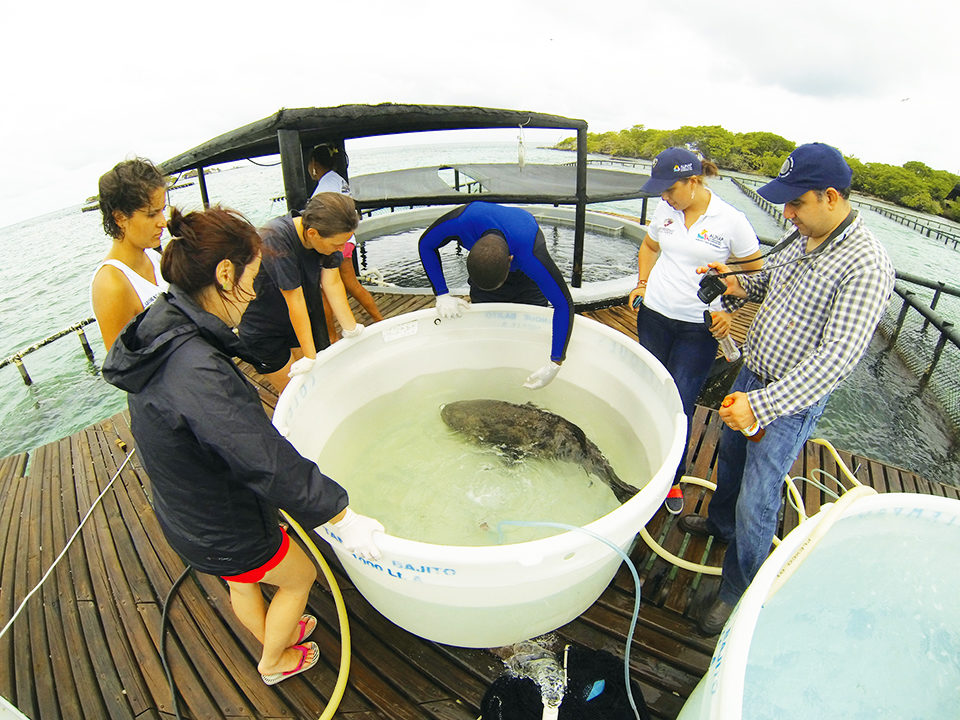
Colombia has been recognized as one of the most privileged countries for aquaculture development in Latin America, primarily because of its year-round favorable tropical weather and geographic position, with coasts on both the Caribbean Sea and the Pacific Ocean. In addition, abundant biodiversity, including a variety of commercially important marine species, is present on both coasts. However, the industry has only been developed in the last 30 years, and most commercial production is focused on penaeid shrimp and freshwater species such as tilapia and cachama.
Industry diversification
Recently, there has been an increased interest in diversifying the aquaculture sector with tropical species of marine fish exhibiting market potential. To this end, the Center for Aquaculture Research in Colombia (CENIACUA), located near Cartagena de Indias, and the Center for Research, Education and Recreation (CEINER), at San Martin de Pajarales in the Rosario Islands, have been collaborating on technology development and transfer with the University of Miami in Florida, USA.
The collaboration has been extremely fruitful and yielded, among other things, successful results for a pioneering project for the culture of cobia (Rachycentron canadum) in Colombia. The work includes training the staffs of both institutes in all the stages of production – broodstock management, live feed culture, larviculture and grow-out at offshore sites.
With the knowledge acquired at the University of Miami and the experience of several years of research in both institutions, protocols and technologies for cobia aquaculture from egg to market were adapted to the local conditions, generating a new alternative for the aquaculture sector. This was the first experience in fish mariculture for the country.
Building on cobia work
From previous development experience with Pacific white shrimp (Litopenaeus vannamei), CENIACUA has developed specific research programs in aquaculture and has a qualified staff and permanent advisors with wide experience in selective breeding, animal health, commercial production and nutrition. Additionally there is a research program specifically aimed at diversifying aquaculture in the country. The objective is to adapt the latest technology available worldwide to local conditions and create opportunities for new commercial species identified by the aquaculture sector.
Advances with cobia, for example, include closing the reproductive cycle with spawns during all months of the year and sexual differentiation by histology, such as morphometric and meristic variation. Estimations of the inorganic wastes from cobia culture and their impacts on the water column water were performed. Bacterium strains with probiotic activity were extracted from the guts of larvae and juveniles. These experiences are applicable to other local marine fish of commercial importance.
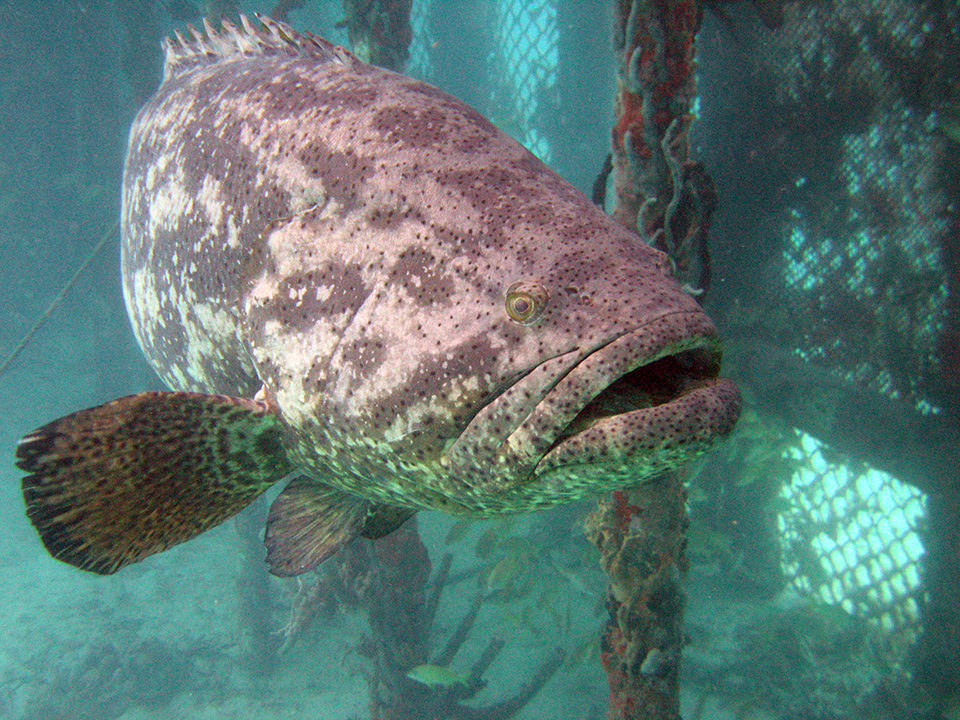
Marine fish
Currently there is renewed interest and support from Colombia’s regional and national governments to obtain aquaculture technology for goliath grouper (Epinephelus itajara); permit (Trachinotus falcatus); and Florida pompano (Trachinouts carolinus) – all considered promising species for commercial and ecological aquaculture.
Additionally, the infrastructure used in the past for shrimp culture could now be adapted with few modifications for the culture of new species, as it is in Asia. Nevertheless, all culture must comply with current biosafety regulations, which will allow worldwide competitiveness.
Pompano
The technology for closing the cycle of pompano has been widely developed by the University of Miami and Harbor Branch Institute, with survival rates above 30 percent. Currently in Colombia, there are advances with the capture of wild pompano specimens, which are transported and kept in quarantine.
Their general welfare is monitored during adaptation to enclosed or semi-enclosed conditions. The specimens are classified by size and moved to maturation or rearing tanks, where they are tagged and measured every 15 days to estimate individual growth. Researchers hope to start hormonal induction next year, once the larger specimens reach maturity.
Grouper
Goliath grouper, as it is called, has been cataloged by the International Union for Conservation of Nature as a critically endangered species. Among the causes is the fact that the fish have a low turnover rate, since they are protogynous. They are female while in the mangroves during the first years of life before turning into males at the coral reefs. Additionally, they form aggregations during spawning season, which allows their easy capture.
The groupers are currently held in cages at sea on a sandy bottom at a depth of 2 to 4 m. The cages, which are built with plastic pipes and mesh net, allow the free movement of ocean currents through them. The animals have been maintained in these cages since they were juveniles, so they have adapted to their captivity. Through cannulation, the fish have been sexed, and some have been deemed mature, with a total length of 0.8 m and age over 7 years. All animals are fed to satiation with fresh fish supplemented with vitamins.
Some broodstock groupers have been at the CEINER facilities for over 20 years. However, currently only those aged 8 to 15 years are used for research. Females weigh from 11.2 to 24.2 kg and measure 0.83 to 1.19 m in overall length, while males weigh from 13.5 to 57.6 kg and are 0.83 to 1.33 m long. Sexually mature individuals selected to be injected with hormones are placed in 150-m3 tanks equipped for collecting floating eggs from spawnings. The facilities have permanent mass cultures of rotifers and microalgae in order to perform larviculture trials with fertile spawnings.
Because these groupers are considered a threatened species in Colombia, interest has been generated for developing culture techniques to produce juveniles in laboratories and repopulate the natural habitat. Sustainable mariculture operations at sea would also provide an alternative income for artisanal fishermen. These initiatives have been supported by the National Natural Parks of Colombia and the National Aquaculture and Fisheries Authority, among others.
Two years ago, the authors had the opportunity to attend a training course related to grouper hatchery production in Krabi, Thailand, to learn the techniques involved in broodstock management, hormonal induction of maturation and larviculture for giant, tiger and humpback groupers. CEINER has experience in goliath grouper broodstock management, with almost 40 adults and more than 100 juveniles currently at its facilities.
Males and females mature during several months of the year. CEINER researchers have tried hormone implants and injections at the time of the full moon, so far without successful spawns. Artificial fertilization was recently carried out after stripping males and females for the first time with this species. The objective in 2015 is to determine the parameters regulating spawning performance for broodstock, and consequently begin larvae production. The University of Miami and Thailand grouper culture experts will collaborate to develop goliath grouper aquaculture in Colombia.
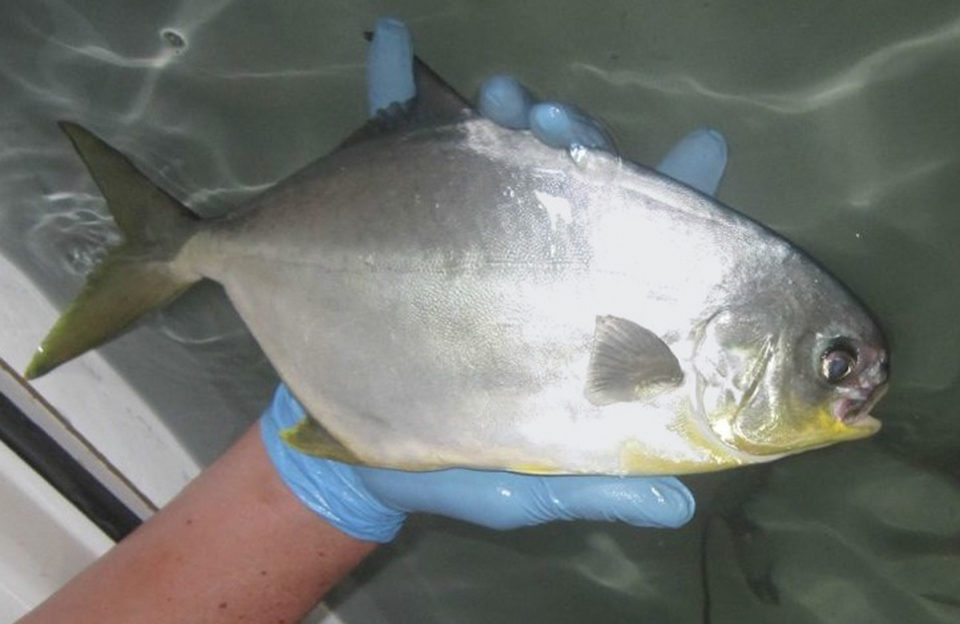
Perspectives
As happened before with cobia, new questions will arise in various knowledge fields as the Florida pompano and goliath groupers adapt to each one of the production stages. It is important to learn more about their natural behaviors and recreate them in the laboratory as closely as possible.
This must be accompanied by daily observation and adjustments that seem simple, but are key, in such areas as aeration, tank and water color, food quality and planning of the food regime to guarantee the delivery of high-quality seed that can provide good performance during growout to market size.
In the long term, with the implementation of commercial finfish culture of several valuable species in Colombia, the authors hope to significantly contribute to expanding the local food supply and bring new production and employment opportunities to coastal communities.
(Editor’s Note: This article was originally published in the January/February 2015 print edition of the Global Aquaculture Advocate.)
Now that you've reached the end of the article ...
… please consider supporting GSA’s mission to advance responsible seafood practices through education, advocacy and third-party assurances. The Advocate aims to document the evolution of responsible seafood practices and share the expansive knowledge of our vast network of contributors.
By becoming a Global Seafood Alliance member, you’re ensuring that all of the pre-competitive work we do through member benefits, resources and events can continue. Individual membership costs just $50 a year.
Not a GSA member? Join us.
Authors
-
Mabel S. Mendoza
Center for Aquaculture Research in Colombia
Laboratorio CENIACUA
Carrera 70 F No.78 A-84
Bogota, Colombia -
Jaime A. Rojas
Center for Research, Education and Recreation (CEINER)
Fundación Marina
Cartagena, Colombia
Tagged With
Related Posts
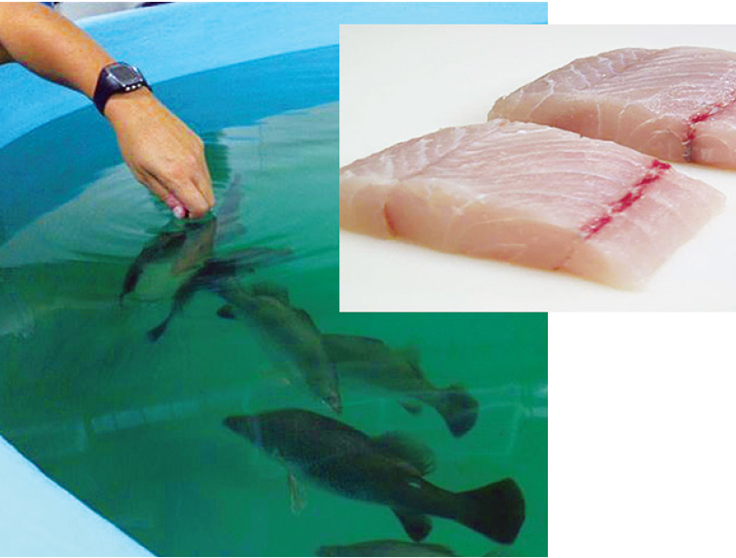
Intelligence
Adding flavor complexity to farmed barramundi
Organoleptic attributes such as flavor and aroma are among the most important factors that influence consumer acceptability and demand for fish products. Consumers have identified farmed fish as less complex and lacking “sealike” or “sea-fresh” flavors and aromas.

Aquafeeds
Replacing fishmeal with DFB in pompano diets
A study evaluated the inclusion of bacterial, dried fermented biomass as a replacement for fishmeal in four practical diets for Florida pompano juveniles. There were no significant differences in final weight, survival, FCR or thermal-unit growth coefficient.
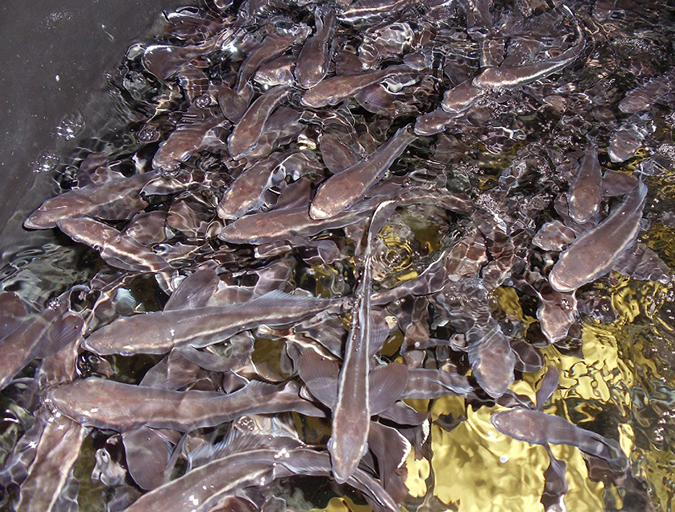
Aquafeeds
Is a fish oil-free cobia feed possible?
The availability of a cost-effective grow-out feed formulation is an ongoing bottleneck for the expansion of cobia production. Studies by the authors show that the development of an aquafeed with limited or no fish oil content is possible.
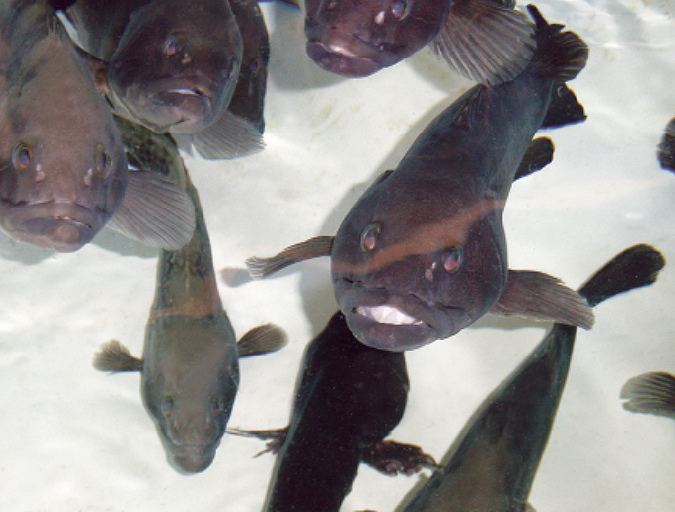
Aquafeeds
Increased density improves grouper feeding response, growth
A growth trial using hatchery-reared grouper was carried out to study the effects of stocking density on feed intake and subsequent growth. Contrary to common perceptions, fish stocked at the highest density had higher feed intake and body weights.



